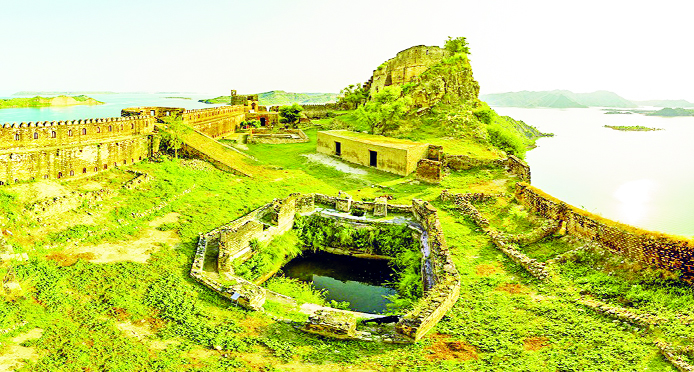Prof Suresh Chander
The rise and fall of cities are profound reminders of the fleeting nature of human civilization. Across the world, cities have been born, flourished, and ultimately perished, leaving behind only ruins that quietly tell the stories of their past glory. Some of these ancient cities lie buried for centuries, waiting to be rediscovered by anthropologists and archaeologists who, through meticulous efforts, reconstruct the history of humankind.
In what was once a bustling metropolis, there now lies only a desolate landscape of scattered bricks and stones-an eerie testament to the devastating consequences of unchecked ambition. The city’s destruction was not caused by nature’s wrath or the devastation of war, but by humanity’s relentless quest for progress.
Its inhabitants, driven by the dream of a brighter future, sought to harness the power of the nearby river. They diverted its waters to generate electricity, built canals to irrigate distant lands, and heralded the endeavour as a marvel of modern engineering. Yet, in their pursuit of prosperity elsewhere, they inadvertently sacrificed their own city’s lifeblood.
As the river’s waters were syphoned away, the city’s foundations began to crumble. Buildings that once towered over the landscape now lay in ruins, their stones scattered like forgotten gravestones. The city, once vibrant with life, was gradually transformed into a vast shimmering lake-a stark reminder of the devastating cost of unbalanced progress.
The irony is unmistakable: in pursuit of a better life for others, an entire city was sacrificed, leaving its residents to confront the ruins of their shattered existence. What was meant to bring prosperity instead delivered destruction. The remnants of this city stand as a cautionary tale, a sombre reminder of the importance of balancing human ambition with wisdom and foresight.
As we stand amid the scattered debris, we are compelled to reflect on the true cost of progress. Is it worth sacrificing communities, heritage, and the land itself in the name of development? The ruins of this once-thriving city whisper a powerful truth: the relentless pursuit of a better future can sometimes lead to the destruction of the very essence of life.
This is no work of fiction but a story of shattered city of Mirpur
The submerged city of Mirpur, in Pakistan-administered Kashmir, embodies this narrative-its ruins resting beneath the waters of the Mangla Dam, a poignant testament to the city’s turbulent history.
Mirpur’s tragedy is twofold. In 1947, as India and Pakistan divided, the city was ravaged by religious marauders, forcing its residents to flee with little more than the clothes on their backs. Homes, livelihoods, and memories were left behind, and the exodus marked the beginning of Mirpur’s decline. The city’s population dwindled, its spirit shattered.
Decades later, the construction of the Mangla Dam sealed Mirpur’s fate. The dam’s waters swallowed the city, submerging its remnants in a watery grave. Today, the ruins of Mirpur lie beneath the surface, a ghostly presence hidden in the depths of the Mangla Dam.
Yet, the story of Mirpur refuses to fade into obscurity. The city’s submerged ruins have become a source of fascination, inspiring countless YouTube documentaries and narratives that attempt to capture its essence. These stories serve as a testament to Mirpur’s enduring legacy, proving that even in death, the city continues to captivate and intrigue.
As we gaze upon the waters of the Mangla Dam, we are reminded that the rise and fall of cities are a natural part of human history. Mirpur’s tale is a poignant reminder of the transience of human existence and the impermanence of our creations and the fragility of human ambition – a story that demands reflection and a careful reckoning of the cost of our ambitions.
Like many stories this story has a climax
As the story of Mirpur comes full circle, many of its people found a new home in England, where their language, Pahari, flourishes as the second most spoken language after English and 70 per cent of British Pakistanis in England trace their origins to Mirpur. Yet, some like Farah Nazir search for their roots, calling their language Apni Zaban. Others like Reiss Haidar reflect on their ancestral heritage, finding solace in the preservation of Gandhara’s history in British museums and libraries. Despite building new lives and grand homes in new Mirpur, aka mini England, a deep connection to their past remains. Eight MPs with roots in Pakistan-administered Kashmir now serve in the UK House of Commons, but their souls remain tied to the submerged city of Mirpur. Do they find peace in their new lives? It’s a complex question. But the pull of their heritage is evident when they visit the ruins, when the waters of Mangla dam recede, to pay respects to their forefathers, an umbilical cord that remains unbroken.”
(The author is former Head of Computer Engineering Department in G B Pant University of Agriculture & Technology)



